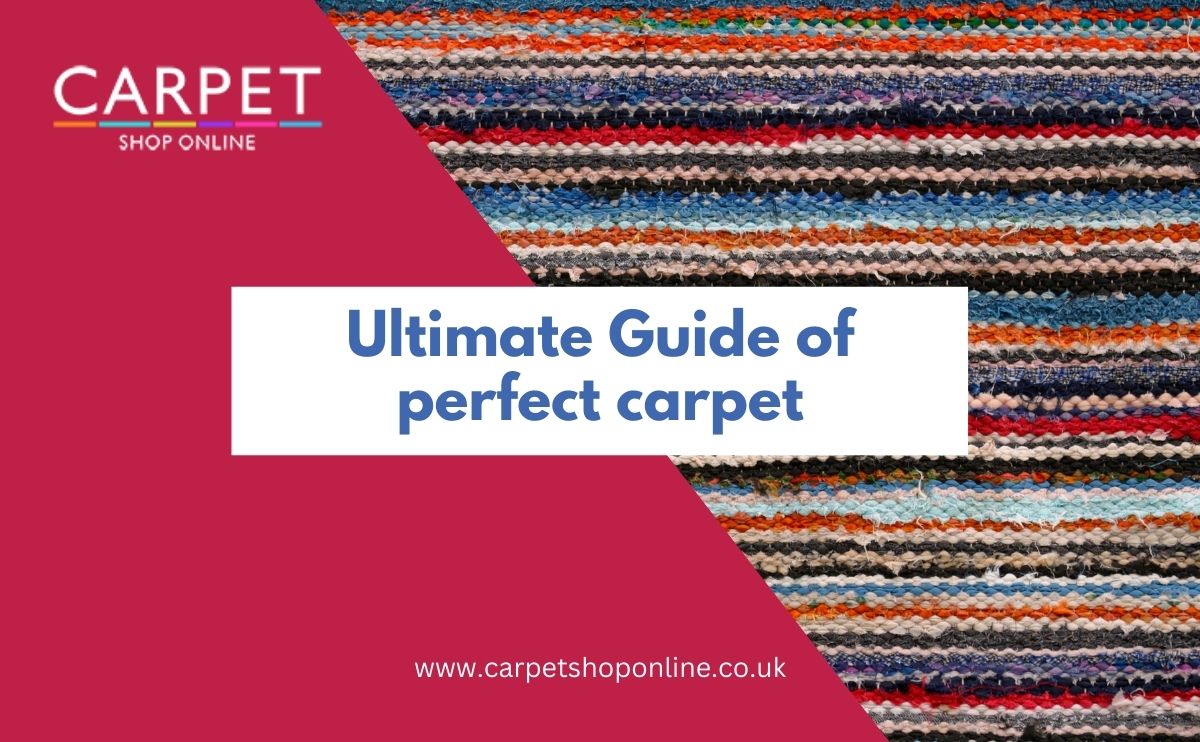Carpets are an important part of interior decor and flooring. They add beauty, texture, and warmth to any indoor space. Different types of carpets are available, made from various materials to suit any style and requirement. In this article, we will explore the other materials used for carpet making and the styles derived from it.
Wool Carpets Types
Wool is one of the most commonly used materials for different types of carpets due to its durability and superior insulating properties. These carpets are extremely resilient and can last for decades with proper care. Different grades and densities of wool are used, ranging from high-quality pure wool to wool blends. Pristine wool carpets are luxurious but expensive, while wool blends provide good value.
These carpets come in varying pile heights to suit different aesthetic needs. For example, high-pile wool carpets provide an ultra-plush underfoot feel, while low-pile wool works well for high-traffic areas. Moreover, wool carpets are naturally stain-resistant and do not readily show dirt, making them easy to maintain. Their ability to regulate indoor temperature also helps save energy costs on heating and cooling.
Nylon Carpets
Nylon is a very durable synthetic fiber used extensively for carpets worldwide. It holds dye well for vibrant colors and shows less dirt visibility than other materials. These carpets are affordable and perform well in both residential and commercial settings.
Moreover, they come in various textures, from tightly woven low piles to lush cut piles. For example, Berber or Saxony nylon carpets with intricate patterns are popular today. Nylon is highly resilient against wear and commands a long lifespan when properly installed and maintained.
It is humidity-resistant and does not deteriorate easily with exposure to moisture. With technological advances, modern nylon fibers mimic the softness and luxury of wool carpets at competitive prices.
Polyester Carpets
Polyester carpets are affordable, stain-resistant, and easy to clean, an alternative to wool and nylon. They are commonly used in locations where heavy foot traffic is expected, like family rooms, offices, and hallways.
These Polyester fibers are durable due to their resistance to matting and crushing under pressure. For example, polyester carpets are widely preferred for apartments due to their density and ability to withstand high impact.
They tolerate moisture reasonably well without sustaining permanent damage. Polyester carpets are available in low, medium, and high pile heights, lending various textures at value pricing. Being synthetic, polyester fibers do not support microbial growth, providing a hygienic underfoot environment indoors.
Rugs and Carpets Made From Natural Materials:
In addition to wool, various other natural material options are available for contemporary rug and carpet making. For example, sisal and seagrass rugs from plant fibers lend a coastal, earthy aesthetic. Moreover, they complement casual, bohemian, and farmhouse interior styles. Jute rugs have coarse texture but are very affordable and eco-friendly. Coir rushes made from coconut coir are durable floor coverings suitable for high-traffic spots.
Silk and linen rugs exude luxury but require more delicate care. Bamboo and hemp carpets are trending for their sustainability appeal and pleasing tactile quality. Natural fiber rugs are crafted using traditional techniques and are often hand-knotted, lending them an artistic, unique appeal.
Carpet Styles
Apart from materials, carpets also vary in styles defined by their pile textures. Loop pile carpets have soft, dense loops of uncut fibers forming resilient ground covering. For example, Berber-style carpets with diversified loop designs are widely sold. Cut pile carpets have individual fibers cut to the same level, giving a plush feel, and are available in plain weaves or intricate patterns.
Moreover, Shag pile carpets have long uncut lustrous fibers arranged in the same or varying lengths resembling soft fur. They are highly textured and cozy underfoot but tend to mat down faster. Plush carpets feature tightly twisted, finely spun fibers cut fairly long for maximum cushioning. Sculpted carpets use diverse pile heights and textures within a single rug for artistic flair.
Carpet Pad
For softness, warmth, noise insulation, and longer carpet life, it is recommended to lay carpets over cushioning pads. Foam-backed carpets have integrated foam laminated below for inherent cushioning. Other main pad materials include jute, rubber, urethane foam, etc. Thicker, higher-density pads boost carpet comfort remarkably. For example, a 3/8 inch pad is standard, but a 1⁄2 inch or thicker provides a more luxurious cradle under feet. Proper pad selection also maintains carpet shape, extends lifecycle, and eases installation/removal.
Conclusion
As seen above, carpets are available in natural and synthetic materials and various textures and styles to beautify indoor spaces. Choosing the right rug depends on budget, aesthetics, durability, and maintenance needs. Blending material, color, pad, and underlay choices result in floor coverings that can transform interior decor for years. With advancements in manufacturing technologies, modern carpets offer superior performance yet remain affordable and accessible.
Are you looking for high-quality carpets at factory-direct prices? Visit the online carpet shop for the biggest collection of carpets made with the finest materials. As a leading manufacturer, they offer carpets in various styles, textures, and pile structures crafted to complement any decor. Shop from our extensive curated range of wool, nylon, synthetic, and natural fiber carpets in custom sizes. Browse our collection now and transform your home with attractive price points only possible as the producer.


